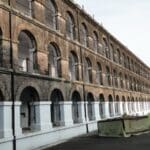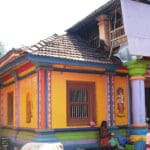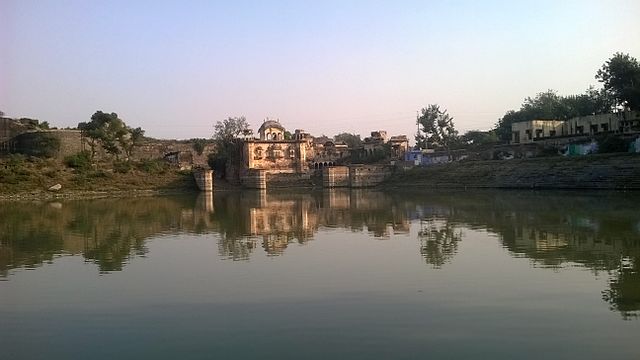Goa, a coastal paradise known for its sandy beaches, vibrant culture, and Portuguese heritage, is also home to several historic forts that dot its landscape. These forts stand as silent witnesses to the region’s tumultuous past, serving as reminders of Goa’s strategic importance during various periods of history. From defending against invading forces to providing breathtaking views of the Arabian Sea, these forts offer visitors a glimpse into the rich tapestry of Goa’s history and architectural heritage. Let’s embark on a journey to discover seven popular forts in Goa that are steeped in history and charm.
Fort Aguada
History
Fort Aguada, located on the shores of the Arabian Sea in North Goa, was constructed in the early 17th century by the Portuguese. The fort derived its name from the freshwater springs (“agua” in Portuguese) found within its premises, which provided a vital water source to passing ships. Initially built to defend against Dutch and Maratha invaders, Fort Aguada later served as a prison and a crucial defense outpost for Portuguese forces in Goa.
Architecture
Built with sturdy laterite stones and encompassing an area of approximately 12,000 square meters, Fort Aguada features robust bastions, a towering lighthouse, and a series of underground chambers. The fort’s architecture reflects a blend of European and Indian influences, with its strategic layout designed to withstand enemy attacks and provide panoramic views of the coastline.
Things to Do
Visitors to Fort Aguada can explore its well-preserved ramparts, climb up the lighthouse for sweeping views of the Arabian Sea, and wander through the sprawling fort complex. The nearby Aguada Beach offers opportunities for sunbathing, swimming, and water sports, making it a perfect destination for a day of exploration and relaxation.
Accessibility
Situated near Sinquerim Beach, approximately 18 kilometers from Panaji, the capital city of Goa, Fort Aguada is easily accessible by road. Visitors can reach the fort via taxis, buses, or rental vehicles, with ample parking available near the entrance.
Chapora Fort
Historical Significance
Perched atop a rocky cliff overlooking the Chapora River, Chapora Fort holds a storied past dating back to the 17th century. Originally built by the Portuguese, the fort changed hands multiple times between Portuguese and Maratha forces before being abandoned in the 19th century. Its strategic location offered commanding views of the surrounding landscape, making it an ideal defensive outpost.
Scenic Views
One of the main attractions of Chapora Fort is the stunning panoramic views it offers of the Chapora River, nearby Vagator Beach, and the Arabian Sea beyond. Visitors can climb to the top of the fort’s ramparts and soak in the breathtaking vistas while enjoying the cool sea breeze and serenity of the surroundings.
Visiting Tips
To fully enjoy the Chapora Fort experience, it’s advisable to visit during the early morning or late afternoon to avoid the midday heat. Comfortable footwear is recommended for navigating the uneven pathways leading to the fort, and visitors should carry water and sunscreen to stay hydrated and protected from the sun.
Tiracol Fort
Overview
Located at the northernmost tip of Goa, Tiracol Fort stands as a sentinel overlooking the Tiracol River and the Arabian Sea. Originally built by the Marathas in the 17th century, the fort later came under Portuguese control and served as a strategic outpost for defending the region against potential invaders.
Historical Background
Tiracol Fort played a crucial role in safeguarding Portuguese interests along the coastline, with its strategic position offering panoramic views of the surrounding terrain. Over the years, the fort has witnessed various historical events and undergone renovations to preserve its architectural heritage.
Nearby Attractions
While exploring Tiracol Fort, visitors can also visit the nearby Tiracol Church, dedicated to St. Anthony. The tranquil surroundings, pristine beaches, and lush greenery make Tiracol a perfect destination for those seeking peace and relaxation away from the hustle and bustle of urban life.
Corjuem Fort
Brief History
Nestled amidst verdant hills and coconut groves in North Goa, Corjuem Fort is one of the smallest and least-known forts in the region. Built by the Portuguese in the 17th century, the fort served as a defensive outpost protecting the territory from potential invaders and providing a vantage point for monitoring enemy movements.
Architecture
Despite its modest size, Corjuem Fort boasts impressive architecture, with sturdy bastions, a central courtyard, and a well-preserved chapel. The fort’s strategic location amidst lush greenery and scenic landscapes makes it a popular destination for history enthusiasts and nature lovers alike.
Nearby Places of Interest
Adjacent to Corjuem Fort lies the picturesque Aldona Village, known for its charming churches, winding lanes, and traditional Goan architecture. Visitors can explore the village’s cultural heritage, interact with the friendly locals, and sample authentic Goan cuisine at nearby eateries.
Reis Magos Fort
Historical Importance
Situated on the northern bank of the Mandovi River, Reis Magos Fort holds immense historical significance dating back to the 16th century. Originally built by the Portuguese, the fort served as a strategic outpost for defending the territory from enemy attacks and safeguarding Portuguese interests in the region.
Restoration Efforts
In recent years, Reis Magos Fort has undergone extensive restoration efforts to preserve its architectural heritage and cultural significance. The restoration work has transformed the fort into a cultural center and museum, showcasing exhibits on Goan history, art, and culture.
Tourist Facilities
Visitors to Reis Magos Fort can explore the various chambers, galleries, and ramparts within the fort complex, learning about its history and significance through guided tours and interactive exhibits. The nearby Reis Magos Church, with its ornate architecture and historical significance, is also worth a visit for those interested in Goa’s colonial past.
Cabo de Rama Fort
Historical Background
Perched atop a steep cliff overlooking the Arabian Sea, Cabo de Rama Fort holds a special place in Goan history and folklore. Believed to have been built by Hindu rulers in ancient times, the fort later came under Portuguese control and underwent significant renovations to fortify its defenses.
Panoramic Views
One of the highlights of visiting Cabo de Rama Fort is the breathtaking panoramic views it offers of the surrounding coastline, dense forests, and meandering rivers. Visitors can climb to the top of the fort’s ramparts and soak in the serene beauty of the landscape while capturing stunning sunset scenes or enjoying a leisurely picnic with family and friends.
Best Time to Visit
The best time to visit Cabo de Rama Fort is during the winter months, from November to February, when the weather is pleasant and conducive to outdoor exploration. Visitors should avoid visiting during the monsoon season, from June to September, as heavy rains and slippery pathways may hinder access to the fort.
Conclusion
Exploring the forts of Goa is not just a journey through history but also an opportunity to immerse oneself in the region’s rich cultural heritage and natural beauty. From the imposing ramparts of Fort Aguada to the scenic vistas of Chapora Fort, each fort offers a unique glimpse into Goa’s colonial past and architectural marvels. Whether you’re a history enthusiast, a nature lover, or simply seeking adventure, a visit to these forts promises an unforgettable experience in the enchanting land of Goa.
FAQs
- Are the forts in Goa open to visitors throughout the year?
- Yes, most forts in Goa are open to visitors throughout the year, although it’s advisable to check for any seasonal closures or maintenance activities.
- Are there entry fees for visiting the forts?
- Entry fees vary for each fort, with some offering free entry while others may have a nominal fee. It’s recommended to inquire about entry fees before planning your visit.
- Can I hire a guide to explore the forts?
- Yes, guided tours are available at certain forts, providing visitors with valuable insights into the history and significance of each site.
- Are there any nearby amenities such as restrooms and refreshment stalls at the forts?
- While some forts may have basic amenities like restrooms and refreshment stalls, it’s advisable to carry water and snacks, especially during longer visits.
- Are the forts wheelchair accessible?
- Accessibility varies for each fort, with some having wheelchair-friendly pathways and facilities, while others may have limited accessibility due to uneven terrain and steep stairs. It’s recommended to inquire about accessibility options before planning your visit.



















